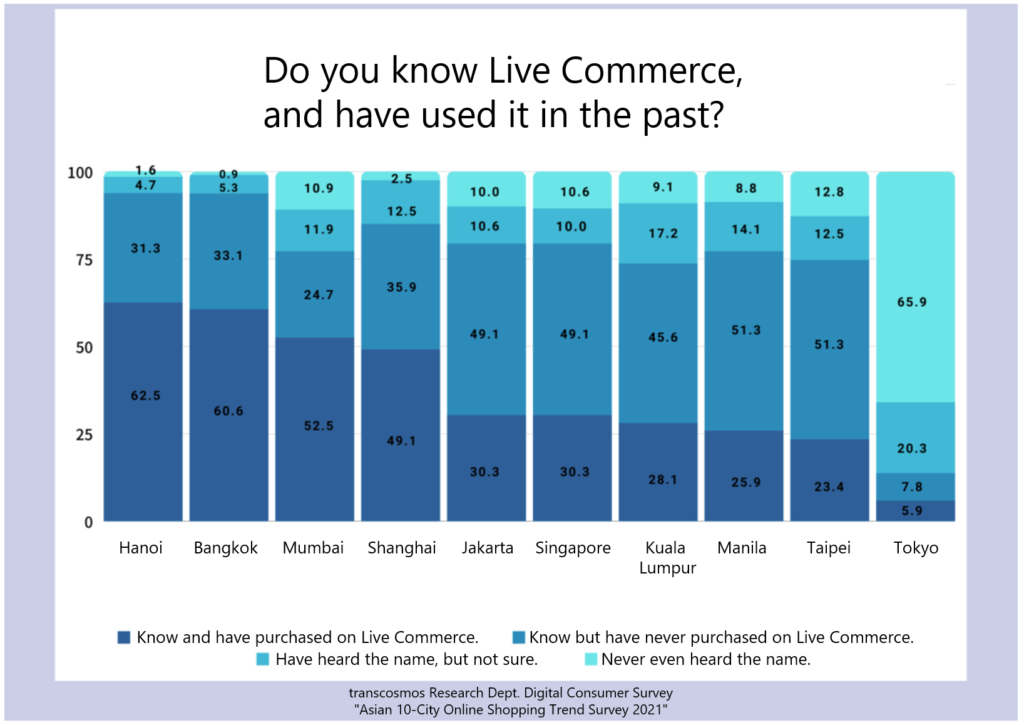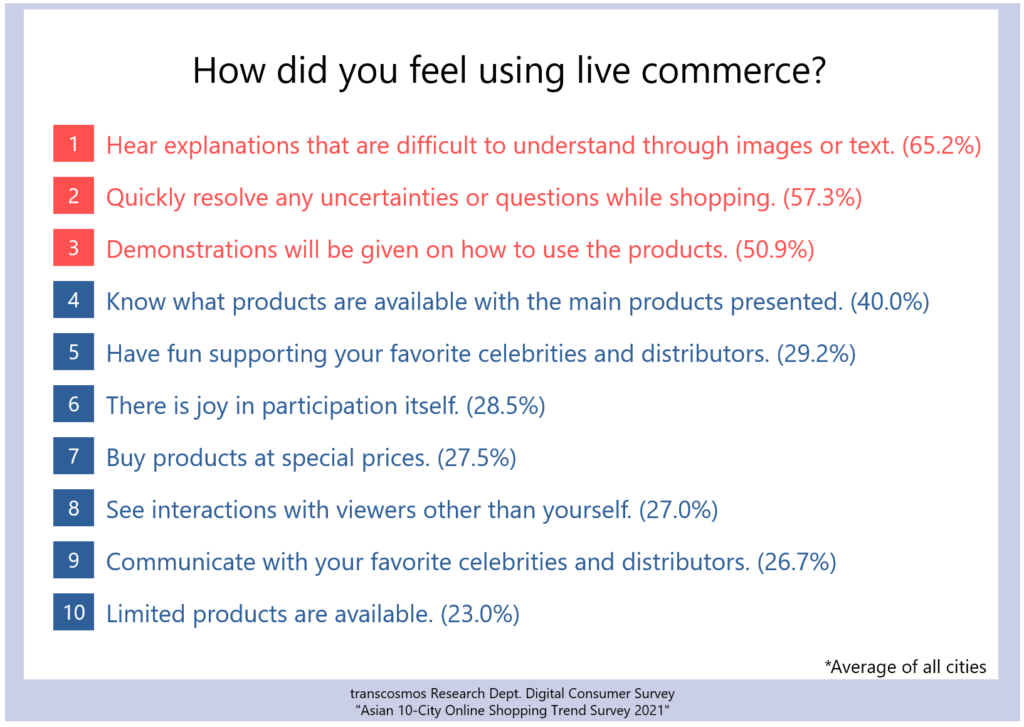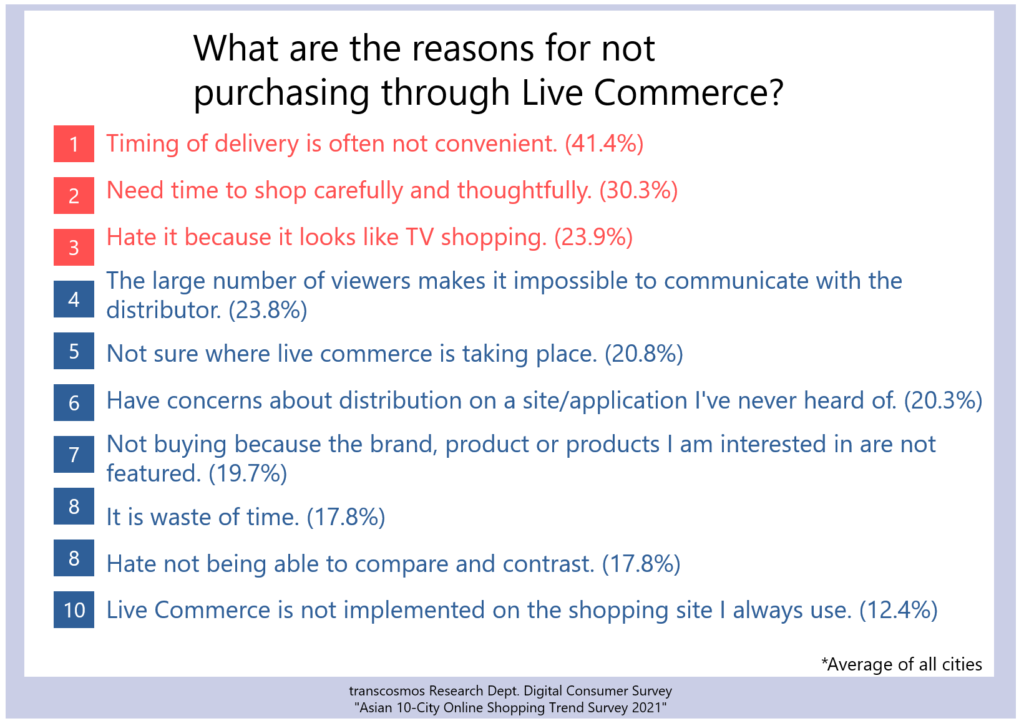Do you watch streaming content on the Internet? YouTube, TikTok, LINE, Instagram, Nico Nico Douga and many other platforms offer live streaming.
Online video content has evolved significantly as internet connection speeds have increased. Today, it is possible to watch live broadcasts from around the world in real-time with a single smartphone.
In the midst of all this, a form of e-commerce has emerged called Live Commerce. Do you know what that is? Although the term is still unfamiliar in Japan, live commerce has become widespread in China and elsewhere.
In this article, we look at live commerce.
Contents
What is Live Commerce
In traditional e-commerce, consumers typically visit an e-commerce site and purchase products by looking at the recommended products displayed on the site or by following site transitions to reach the products. Live commerce, on the other hand, uses video streaming platforms and SNS live streaming capabilities to encourage consumers to make purchases while communicating with the merchant in real-time.
Some may think it is not that different from TV shopping programs, but the big difference is that “consumers and merchants communicate in real-time. Unlike traditional e-commerce or TV shopping programs, consumers can comment on live broadcasts in real-time. In other words, if a consumer has a question about a product or service, they can ask it in the comments section on the spot, and the merchant can answer the question on the spot.
For example, if you say, “I would like to see not only the front but also the sides and back,” the dealer will respond to your request. Or if you ask, “How should I take care of it?” they will tell you how to take care of it on the spot. While traditional e-commerce and TV shopping programs can only provide passive content to consumers, live commerce can communicate with each other and provide more information to consumers.

Live Commerce Successes
Live commerce is commonplace in China, and the Chinese version of TikTok, “douyin,” has already implemented a live commerce feature, with many manufacturers and retailers promoting their products via live streaming. Douyin also has its e-commerce mall, allowing consumers to complete their purchases within the app.
By 2020, ByteDance, the operator of Douyin, has announced that the GMV (total value of transactions in circulation) of live commerce will reach 500 billion yuan (approximately $9.5 trillion). In addition, according to JETRO (Japan External Trade Organization), China’s live commerce market will have approximately 390 million users by the end of 2020, accounting for 39.2% of the total number of Internet users in China.
ThereforeTherefore, it would not be an exaggeration to say that live commerce has permeated daily life in China and that the Chinese live commerce market as a whole has been a success.
The Expanding Live Commerce Sphere
According to the Asian 10-City Online Shopping Usage Trends Survey 2021, the cities with the highest percentage of respondents who have used live commerce are Hanoi (62.5%), Bangkok (60.6%), and Mumbai (52.5%), with live commerce awareness exceeding 70% in nine cities.
Thus, live commerce expands not only to China, a leading live commerce country but throughout Asia.

Advantages and Disadvantages of Live Commerce
Live commerce is growing in many Asian countries, but are there any drawbacks?
Let us take a look at the pros and cons of this method.
The following is a survey we conducted in our “Asian 10-City Online Shopping Usage Trend Survey 2021” to find out what consumers think are the advantages and disadvantages of live commerce.
Pros

Cons

Many consumers find that the use of video makes explanations easy to understand and problems easy to resolve through communication. On the other hand, we find that the method is less effective for consumers who are not comfortable with a commercial atmosphere and that consumers become frustrated when the distributor cannot respond to all comments as the number of viewers increases and problems cannot be resolved.
The key to effective marketing in live commerce is to optimize the content of the distribution, taking into account these advantages and disadvantages.
The Future of Live Commerce
Although live commerce is still a minor method in Japan, the live commerce market is expected to expand further in the future, and it is a must-have sales promotion method for companies considering cross-border e-commerce, especially those considering expansion into China.
※The survey data and related images in this article are from our “Asian 10-City Online Shopping Trend Survey 2021”.

